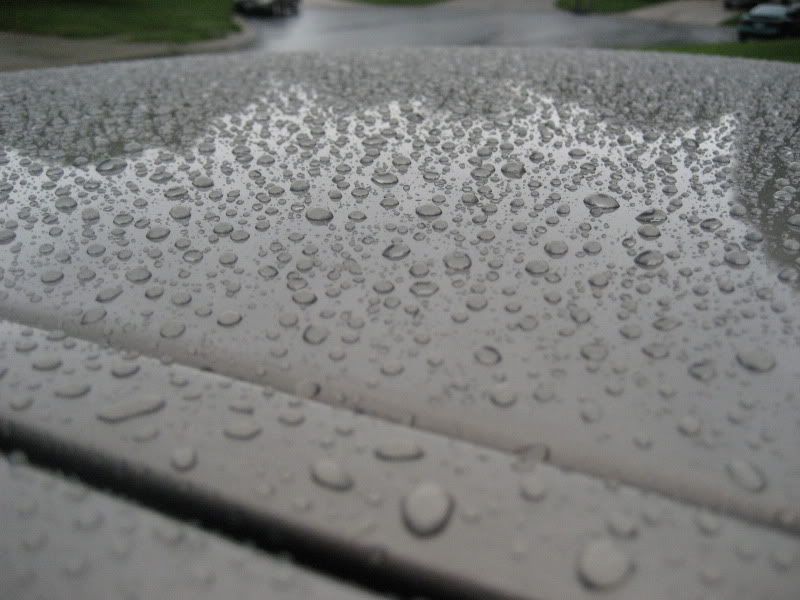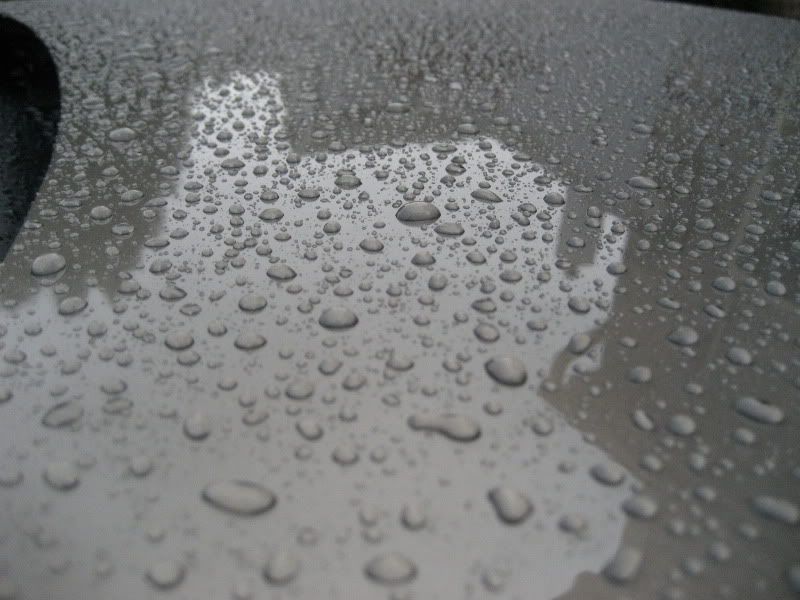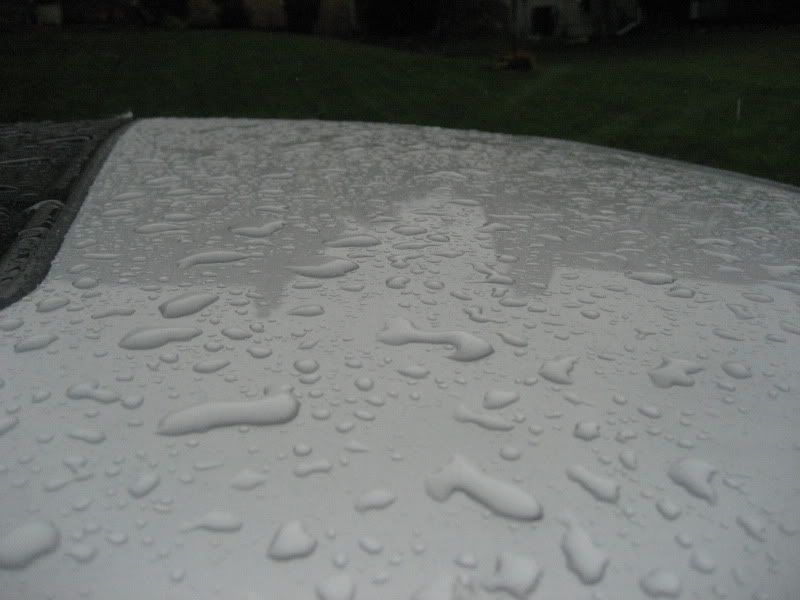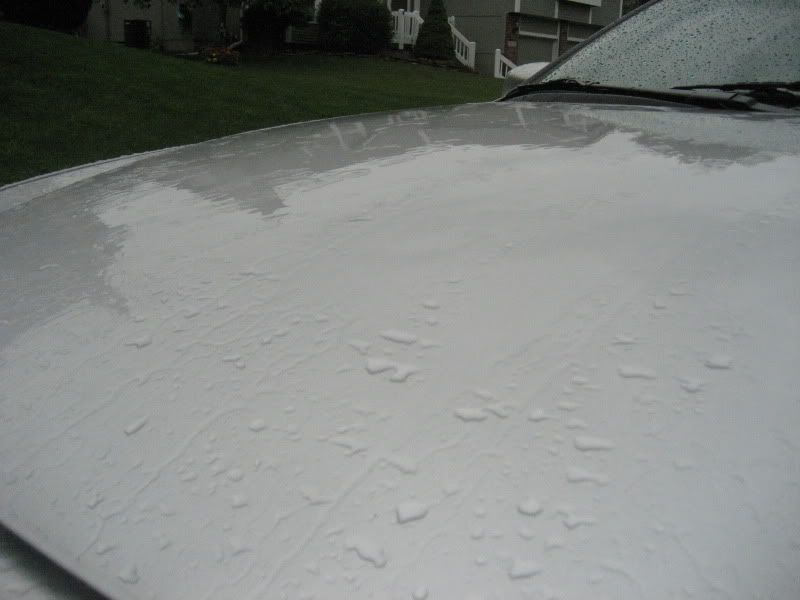imported_Luster
New member
Tight beading is one sure sign of good wax or sealant protection on your paint.
A well-sealed vehicle in the rain, will have nice tight small beads of water, "standing proud"!!!:thumbup:
Slightly larger beads indicate less paint protection, and "sheeting" in the rain, indicates little or no protection.
Paint that is oxidized actually holds water because it is rough in texture and will hold water like a sponge!
Here is an example of "TIGHT BEADING". Two coats of Blackfire WD.



This is "Large Beading", indicating some protection: Could use a coat of sealant or wax.

This is "Water Sheeting", indication Very little protection: Needs sealant or wax.


Sheeting may also occur when rinsing your car using the "Flooding" method. Not the same. I am referring to rain water for this discussion.
There are 2 exceptions:
1. A brand new paint job will bead with no wax or sealant on it.
2. A just-polished vehicle will also bead with no wax or sealant.
The reason? There are oils in the paint and the polish that promote beading. But it won't last long.
Your comments are welcome!


A well-sealed vehicle in the rain, will have nice tight small beads of water, "standing proud"!!!:thumbup:
Slightly larger beads indicate less paint protection, and "sheeting" in the rain, indicates little or no protection.
Paint that is oxidized actually holds water because it is rough in texture and will hold water like a sponge!
Here is an example of "TIGHT BEADING". Two coats of Blackfire WD.



This is "Large Beading", indicating some protection: Could use a coat of sealant or wax.

This is "Water Sheeting", indication Very little protection: Needs sealant or wax.


Sheeting may also occur when rinsing your car using the "Flooding" method. Not the same. I am referring to rain water for this discussion.
There are 2 exceptions:
1. A brand new paint job will bead with no wax or sealant on it.
2. A just-polished vehicle will also bead with no wax or sealant.
The reason? There are oils in the paint and the polish that promote beading. But it won't last long.
Your comments are welcome!


